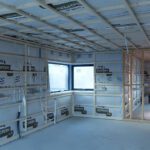Elevated CO2 levels impair decision making ability
Outdoor CO2 levels range between 350 and 400ppm (parts per million), however indoors CO2 levels can increase to unhealthy levels of over 2500ppm without proper ventilation. Generally it is accepted that the level of 1000ppm is toward the upward limit of the acceptable level of CO2 we should be exposed to in our work and living environment.
Feeling fatigued and dizziness are common symptoms of poor indoor air quality and elevated CO2 levels[i].
In a study by Environmental Health Perspectives students exposed to 1000ppm levels of CO2 noticed a large drop in their performance on six of nine tests when the CO2 was raised from a baseline of 600ppm[ii]. The researchers were amazed that at a level generally accepted to be within the range of safety for normal ventilation there was such marked impact on the students’ performance. This research may cause a rethink on what the acceptable level of CO2 is for safe continued exposure and that perhaps ventilation rates should be increased to maintain lower levels of CO2.
Research completed on CO2 levels and measuring air change rates show that at night the CO2 levels build up steadily due to constant CO2 input, i.e. the sleeping occupants. From the graph below we see that the levels exceeded 4000ppm overnight and tapered off during the day when the room was empty.
[iii]
CO2 Levels Measured in Bedroom
High overnight levels of CO2 are, reportedly, a contributing factor to waking up tired.
Should we increase the ACH at night to compensate for this build-up?
If we monitor our CO2 levels and see that the level is increasing – is our ventilation system flexible enough that we can boost the ACH (air changes per hour)? The Lunos Decentralised MHRV and DCV have this feature and allow the user more control over their indoor living environment and the ventilation rates. It is even flexible enough so that only the bedrooms are boosted and not the entire house – which is all that is needed at night.
As we strive for more air-tight buildings – it more important than ever that we monitor and provide proper ventilation and with the present emphasis of insulating existing buildings to meet energy reduction targets – these are the very homes that were built with inadequate ventilation in the first place. How many of us are familiar with houses built 10 years ago with no bathroom exhaust fans and 4”/100mm ‘holes in the wall’ – normally blocked to stop the draft!
Providing adequate ventilation is the only option!
[i] http://www.osstf.on.ca/en-CA/services/health-safety/information-bulletins/inadequate-ventilation-and-high-co2-levels accessed 1 November 2014
[ii] https://www.sciencenews.org/article/elevated-carbon-dioxide-may-impair-reasoning accessed 1 November 2014
[iii] Air Change Measurements Using Tracer Gases: Methods and Results. Significance of air change for indoor air quality By Detlef Laussmann and Dieter Helm – http://www.intechopen.com/books/chemistry-emission-control-radioactive-pollution-and-indoor-air-quality/air-change-measurements-using-tracer-gases-methods-and-results-significance-of-air-change-for-indoor accessed 1 November 2014





